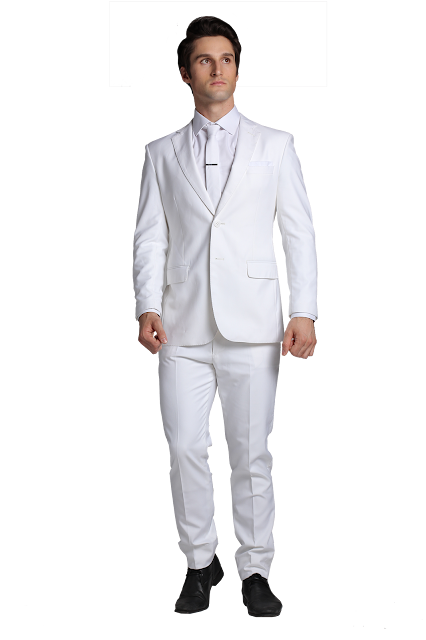When ordering a
custom suit, a man is confronted with a sometimes discouraging selection
of fabrics. While proportion and fit are mostly dictated by your body,
you may select your suit's fabric considering climate, occasion, and the
image you hope to project. What follows is a primer on textile
terminology intended to demystify the world of suit fabrics.
For
centuries now, most men's suits have been made out of wool. This
faithful textile drapes beautifully, maintains its form reliably, and
can be spun and woven to be lightweight and breathable, or to be warm
and cozy. Worsted wool, from which most suits are made, goes through a
finishing process that leaves it smooth and somewhat shiny.
Suitings
are often categorized by fine quality. The wool number, e.g. 90s,
originally meant the number of 560-yard spools a spinner could get out
of a pound of raw wool at the thickness in question, with three-digit
numbers earning the prefix Super." Since textiles are not harshly
regulated in most countries, these numbers may be overstated. Finer
yarns are smoother in appearance, softer to the touch, and produce
lighter fabrics. They are also more luxurious, less durable, and more
prone to wrinkling. 80s wool makes beautiful suiting’s that are perfect
for work.
Super
100s is a bit more luxurious, and Super 120s is extremely smooth. Many
men believe that anything finer is too finicky for normal wear, but for
those who crave decadently fine cloths the high-tech textile
manufacturers turn out fabrics as fine as Super 200s.
The
weight of the fabric, e.g. 10 oz, is what a yard of the fabric weighs.
Heavier fabrics are, naturally, warmer than lighter ones. 10-12 oz
suitings are ideal for spring and fall, as well as Northern summers and
Southern winters. Lighter fabrics, often called "tropical" wool without a
specific weight, are nearly as cool as shorts, perfect for hot summers.
Flannel and tweed, in weights of 14 to 18 oz, are best for cold
winters.
Wool
flannel is not complete the same way that worsted wool is, and it is so
softer, even slightly fuzzy. It can be heavy, for winter, or light, for
spring, fall, and cooler summers. Flannel was the fabric of choice for
business men of the post-war United States, as shown in the 1956 film
The Man in the Gray Flannel Suit, and today it retains a prominent spot
in the pantheon of business attire.





No comments:
Post a Comment